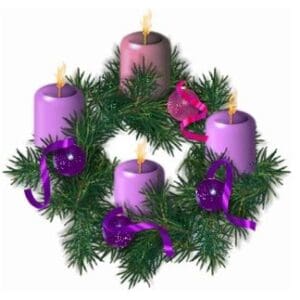
The History behind the Hymn
For countless Christians around the world, “Come, Thou Long-Expected Jesus” signals the beginning of Advent. It was first published in 1744 in Charles Wesley’s Hymns for the Nativity of Our Lord, a little collection so popular that it was reprinted 20 times during Wesley’s lifetime. This hymn is now sung in the Advent season rather than during the nativity of Christ and is included in most denominational hymnals.
“Come, Thou Long-Expected Jesus” has the quality of a petition—a prayer that implores Christ to be among us. Imperative verbs are used six times in the two stanzas found in the hymnal: “Come, thou long-expected Jesus”; “From our fears and sins release us”; “Let us find our rest in thee”; “Now thy gracious kingdom bring”; “Rule in all our hearts alone”; “Raise us to thy glorious throne.” The effect of these petitions is a tone of supplication; Israel’s deep longing for their Promised Messiah!
Notice the repetition of the word “born,” which appears four times. Each time “born” is sung, an aspect of Jesus’ mission to a troubled world is revealed: “Born to set thy people free,”; “Born thy people to deliver,”; “Born a child and yet a king.”; “Born to reign in us forever.”
Although we live in a different time than Charles Wesley, the longings of people’s hearts are just as deep. We long for security, love, relationships, and meaning. To those who open themselves up to its message, this hymn identifies with that longing at the deepest levels of our existence. Where there is no longing, there can be little meaning. Therefore, hope is central to the Christian experience.
And where will our longing, our hopeful waiting lead us? Where is the ultimate home of our hope? In the final line, Wesley takes us there: “Raise us to thy glorious throne.”

Advent is from the Latin word “adventus,” which means “coming”! It begins the fourth Sunday before Christmas Day, which is the Sundaynearest November 30, and ends on Christmas Eve, December 24.
For Christians, Christmas is more than the celebration of the birth of Jesus 2000 years ago; it is the anticipation of that day when Jesus will come again, not as a weak and vulnerable baby boy with no place to lay His head, but as King of Kings and Lord of Lords, having been crowned by God the Father with glory, honor, and praise.
Advent is also a spiritual journey for all who truly believe in Jesus Christ as our Savior and Lord. The Scripture readings for each day walk us through those thousands of years of hope, that moment of the ultimate gift of God’s love, that unconditional peace of knowing our sins are forgiven, and that everlasting joy of knowing our eternal destiny is settled forever!
As we see our world drowning in chaos and confusion, and with wickedness and evil being manifested before us, unashamedly, let us begin this advent season with a sense of penitence and contrition for the unconfessed sins in our own hearts, and then for God’s people around the world so that even unbelievers would see their need of a Savior; the One whose birth even they will celebrate, albeit in selfishness.
The Advent wreath is a wonderful tool to help parents tell the real Christmas story to their children. The wreath is an evergreen circle with five candles, four around the wreath and one in the center.
- The circle of the wreath reminds us of God’s eternity – He has no beginning or end.
- The green of the wreath speaks of the hope that we have in God, the hope of newness of eternal life.
- Candles symbolize the light of God coming into the world through the birth of His son.
- The four outer candles represent the period of waiting during the four Sundays of Advent, which symbolize the four centuries of waiting between the prophet Malachi and the birth of Christ.
- The Prophecy Candle – (purple) the candle of hope – Romans 15:12-13
- The Bethlehem Candle – (purple) the candle of peace – Luke 3:4-6
- The Shepherd Candle – (pink) the candle of Joy – Luke 2:7-15
- The Angel Candle – (purple) the candle of love – John 3:16-17
- The fifth candle is the Christ Candle – (white) – John 1:29
As the candles are lighted over the four-week period, it also symbolizes how the demonic darkness of fear and utter hopelessness of this world, as well as the guilt and remorse for our sins, recede to the degree that the Light of the Word is allowed to shine. The flame of each new candle reminds us that something is happening; God is at work, and more is yet to come.
Linda and I join you in this journey, and we pray that God will reveal Himself afresh and anew unto you as you make room for His Son in your heart! – Pastor Wayne

This is an Advent symbol of Jesus from
Revelation 1:8 and Revelation 22:13
“‘I am the Alpha and the Omega [the first and the last, the beginning and the end],’ says the Lord God, who is and who was and who is to come, the Almighty”
(See also Isaiah 44:6)
The blue letter is the first letter of the Hebrew alphabet, Aleph, and the purple is the last letter of the Greek alphabet, Omega. Not only does this symbolize the One who has come and will come again, it also emphasizes the continuity of God’s work throughout the Old and New Testaments.
